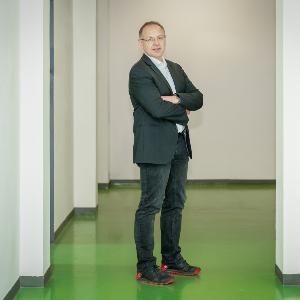What should we make of the chatbot ChatGPT?
20 Feb 2023
What can the ChatGPT language model do and what challenges does the technology pose? Scientists from various academic disciplines offer their view.
20 Feb 2023
What can the ChatGPT language model do and what challenges does the technology pose? Scientists from various academic disciplines offer their view.
The assessment of several LMU scientists:

Albrecht Schmidt is Chair of Human-Centered Ubiquitous Media at LMU. | © LMU
“People create tools and use them. People are always coming up with new ideas for how to make things and processes easier for themselves with tools. Today’s society is unimaginable without extensive and ubiquitous use of technological innovation.
Artificial intelligence (AI) is making it possible for a wide variety of tools to provide cognitive support to people. In many areas of life, AI will help people solve cognitive tasks in the future.
This next step we are going to see in AI’s evolution can definitely be compared to the invention of writing. The use of writing changed societies. Many difficult cognitive tasks became trivial matters. That changed the value of intellectual skills. Developments like writing or printing also changed the way that learning and teaching happened in a society. AI is a massive boost to the cognitive support that people are getting from digital tools. People are gaining new abilities that were barely imaginable just a few years ago. ChatGPT, DALL-E and the like are the rudimentary beginnings of such new tools, but they are giving many people for the first time a glimpse of the possibilities that are opening up. We are going to see rapid advances in usability and usefulness in the next few years. Tool for cognitive augmentation and cognitive amplification of intellectual skills are becoming reality.
As a society, we need to understand how these new cognitive tools can be put to good use and how we can use them to improve our intellectual capabilities.
As individuals, we need to be curious about how we can use these tools creatively, what new things we can do with them, and how we can use them to develop intellectually. It’s important to learn how to make good use of AI — as individuals and as a society. Unlike with writing and reading, which were the preserve of the few for a very long time, we need to be making AI useful to as many people in society as we possibly can right from the start.”

Barbara Plank is Chair for AI and Computational Linguistics | © Jan Greune
“ChatGPT is an example of an NLP language model (LM). Natural language processing (NLP) is a very active and interdisciplinary research field (also known as computational linguistics), with the aim to teach computers to understand human language automatically by applying artificial intelligence and machine learning. Everyone uses NLP already - but may not be aware of that yet (think at spam filtering, machine translation etc). ChatGPT is about to change that – it is the beginning of a new era in NLP: models that can produce longer, more fluid texts, that interact with the human, producing texts that look remarkably coherent.
It’s the faithful generation of text that stretches it to its limits. Faithfulness remains a major problem, as does avoiding bias, supporting smaller languages and dialects, and also hallucination. Hallucination describes the phenomenon whereby an AI model generates an answer that does not make sense, is illogical, or is not relevant. Another problem is that it’s also increasingly difficult to distinguish AI-generated text from human-generated text.
Is ChatGPT new? No. ChatGPT was released recently, but a similar model and predecessor has already been around for a year now (InstructGPT, January 2022). A big difference between the two models is the public access: OpenAI made ChatGPT available to the general public on its platform.
Compared to older chatbot models, new models like ChatGPT are characterized by their increasing coherence and linguistic fluency. The newer, bigger models are fed with vast amounts of text files from the Internet, and ChatGPT is subsequently refined with a great deal of additional data to rank human-preferred outputs higher and create filters to avoid amplifying bad language and biases, which takes hours of human labor.
ChatGPT and similar language models are here to stay and they will partly shape our future. That calls for research and a lot of resources. I believe one particular challenge is in learning language variants with little digital data available, which includes Germanic dialects. That’s one of the things we are currently working on in my recently started ERC project “Natural Language Understanding for non-standard languages and dialects.”
ChatGPT and other chatbots will improve in the future, they’ll provide more faithful answers, probably also offer source information — which is missing from ChatGPT today. But to improve the model, I think that there needs to be a strong link with knowledge databases and that man and machine will need to work together, because without human-centric NLP, the machine will only be able to understand language and solve tasks to a certain extent."

Dr. Florian Schultz-Pernice is coordinator of the DigiLLab at LMU Munich.
"In the public debate around ChatGPT, excitement and fear go hand in hand. If there is a consensus in the debate around ChatGPT, it is that such applications will fundamentally change the way education is done in schools, universities and other institutions — in terms of both learning and teaching.
An application such as ChatGPT gives learners an enormously powerful tool for their own learning. For example, when it comes to learning from texts, you can use this kind of AI to easily create a summary of a source, or to come up with quizzes and tests to check your understanding.
And as far as your own writing is concerned, you can use an app like this to get feedback on what you’ve written so that you can then revise it for spelling, grammar or style.
There is also very wide potential for the teaching side of the equation — across all phases of teaching-related activity, from lesson planning and delivery to assessments and lesson evaluation.
On the basis of Large Language Models, AI will be able to help teachers with lesson planning, for example, by generating suggestions for the selection and structuring of teaching content, and can also develop matching tasks of varying difficulty for differentiation in the classroom.
And when it comes to assessment, an application such as ChatGPT can effectively support the evaluation and correction of texts produced by learners, thus freeing up time for teachers to use for those particularly sophisticated activities that AI is not (yet) able to take on.
For both learning and teaching, however, the benefits of ChatGPT and similar AI in education will undoubtedly be all the greater the more competent teachers and learners are at dealing with this new technology.
And that requires two things: First, the optimal use of systems like ChatGPT requires digital skills Second, in order to make productive use of such applications for your own learning, a mastery of the basic cultural techniques and competency in the topic you are studying is indispensable. combined with the will to use the technology not to avoid learning but as an instrument to promote it — ChatGPT and related applications can very likely prove to be valuable partners in the processes involved in education.”
Researchers from LMU Munich, TU Munich and the University of Tübingen have published an article on the role of so-called Large Language Models in education:
ChatGPT for good? On opportunities and challenges of large language models for education. In: Learning and Individual Differences April 2023

Matthias Leistner is Chair of Private Law and Intellectual Property Law, with Information and IT Law | © privat
"From a copyright perspective, there are several aspects to this question. First, there is the issue of who has ownership of texts produced by ChatGPT. The answer is similar, with certain nuances, under currently applicable law across virtually all major jurisdictions worldwide: There must be a human author. A computer — even if it uses artificial intelligence — does not qualify as an author (in the sense of copyright law).
Of course, humans can become authors through their control of the algorithms or through personal selection and post-processing of texts that are ultimately published. But merely formulating a query or a task for an AI application like ChatGPT to complete is not sufficient for this.
The more substantial copyright problem lies elsewhere: As a user, can I rely on the texts produced by an AI being copyright-free in regard of the source materials the algorithms used? This is where users must proceed with great caution. The underlying software undoubtedly makes more or less direct use of source materials scraped from the internet to optimize the probabilistic algorithmic models underlying ChatGPT. The developers claim that all materials used in this respect were freely available on the internet and are therefore copyright-free. However, things are not necessarily that simple — especially in German and continental European copyright law.
Under European law at least, the mere fact that texts are made available on the internet does not automatically mean that they may also be reused extensively for training or other use in AI applications. Therefore, if the text fragments used in this respect are extensive enough to be protected by copyright (this could potentially be the case for one or two particularly original sentences), ChatGPT’s ‘product’ could still infringe the copyrights of third parties. The user, i.e. the person using the software, will then be jointly liable if they use the produced texts in a way that falls under copyright law.
Against this background, from a scholarly and legal policy perspective, a number of completely different, more fundamental questions arise. How do we ensure that the necessary source materials for the dynamic, innovative development of artificial intelligence, in particular, training data of all kinds which are essentially the bottleneck here, are available in a form that is sufficient, easily accessible, and free of charge wherever possible – at the same time taking into due account the justified interests of copyright holders? Beginnings have been made. But at this point, the discussion in Europe and worldwide must and will continue."